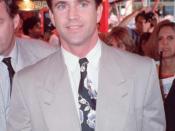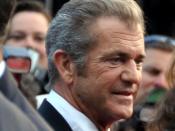The world has been plagued with inequality issues since the beginning of time. The film Braveheart portrays this issue magnificently. Braveheart, directed by Mel Gibson, was released in 1995 and since then has won a total of 5 Academy Awards including Best Picture 1995 and Best Director Mel Gibson. Based on true history, Braveheart takes place in the late 13th Century in Scotland. William Wallace (Mel Gibson) returns to Scotland after living away from his homeland for many years. The king of Scotland has died without an heir and the king of England, a ruthless man known as Edward the Longshanks, has seized the throne. With Longshanks in the throne, the people of Scotland suffer as if they are slaves. The film deals with various literary, dramatic, and cinematic aspects to show the viewer the true struggle of the Scots during this era. Mel Gibson does a good job of meshing these aspects of the film together to portray his viewpoint on the inequality brought about during this time period.
The director uses literary techniques to create a purpose in the film. The literary aspects of the film that create a major impact are the use of a narrator and symbolism. Throughout the film at major turning points, a narrator is used to recap the events that are about to take place, or already have taken place. A good example of the use of a narrator is in the last scene of the film. The narrator, who at first is Robert the Bruce, explains the events that have just occurred, namely the beheading of William Wallace. The narrator sets the scene for the upcoming events. The other prominent literary technique that Mel Gibson uses in Braveheart is the use of symbolism. In the beginning of...


